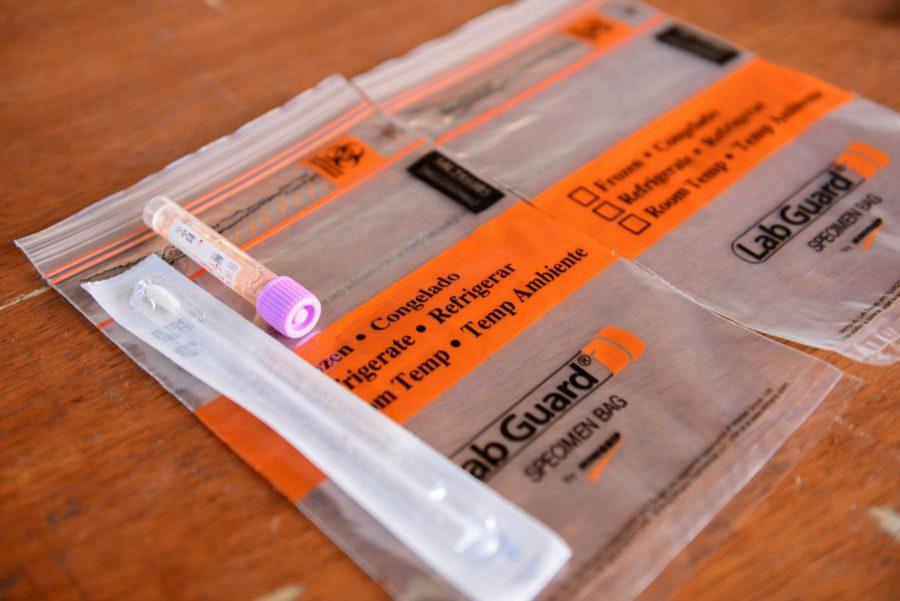Pitt adds 6 COVID-19 cases since last Thursday
October 6, 2020
Pitt added six new COVID-19 cases, composed entirely of students, between Friday and Monday.
The new test results arrive after the University placed about 60 students across three floors of Litchfield Tower B in quarantine Friday evening and “invited” the building’s roughly 360 total residents to be tested for COVID-19 beginning Monday. Pitt asked the floors not quarantined to shelter in place, following an increase in virus cases among building residents over the last several weeks.
Pitt spokesperson Pat McMahon said last Friday that there have been nine positive cases reported between Sept. 23 and Friday in the Central Oakland residence hall, which is Pitt’s largest. The University will release building-wide test results this Friday, he said.
When asked whether the nine cases constitute a cluster, defined as a group of five or more cases that can be epidemiologically linked, McMahon said Tuesday evening that the University is still conducting contact tracing for the most recently reported cases to better understand if the Tower B cases are indeed linked.
“Nonetheless, in light of the common resident hall, we are proceeding cautiously and continuing our investigation,” McMahon said.
Data collected by The Pitt News. Original data collection by Ryan Yang, Online Visual Editor. Archival data by Spotlight PA and the Philadelphia Inquirer. Graph by Jon Moss, Editor-in-Chief.Pitt’s COVID-19 Medical Response Office said despite the spike in Tower B cases, case numbers continue to stay steady.
“We have consistently seen five or fewer new cases reported per day for the past two weeks,” the office said. “In fact, tests conducted through the Student Health Service on Friday resulted in zero positive cases — a first for a single day.”
Eric Macadangdang, the president of the Student Government Board, said he did not get word about the measures put in place for Tower B until Monday afternoon.
“Obviously, I would love to know this information beforehand,” Macadangdang said. “But I know that more than anything, I wanted to make sure they acted upon it and I’m happy to hear that they did, ever since they started seeing that trend last week.”
Macadangdang added that he thought the University responded well to the situation with what he described as “very strong” measures.
“It’s not going to be the most ideal situation, especially for the kids in Tower B, but it is what it has to be in terms of the health and safety of us all,” Macadangdang said. “Hopefully we can make sure that the University is up and at it in making sure that the accommodations and the help desk, the resources they could give to those students in quarantine and in isolation are good.”
McMahon said as a matter of practice, Pitt does not send “broad notifications” about situations that give the University “concern.” He added that “appropriate notifications” were made to members of the administration, and Pitt’s Resilience Steering Committee, which includes student leaders, received a briefing Monday afternoon.
The University has had 295 students and 31 employees test positive since June 26, with 281 students and all employees recovered thus far. Two of the last seven days have seen no new positive cases, according to data reported by Pitt.
There are 14 students currently in isolation housing, which is reserved for those who have either a confirmed or suspected COVID-19 infection. Pitt has a capacity of 179 beds, with the ability to add 20 more.
Tuesday’s case report is the seventh since more classes moved in person on Sept. 14. Provost Ann Cudd announced Sept. 9 that faculty members could apply to teach their classes in person if there is a “definable benefit” to in-person instruction and if an instructor’s dean or regional campus president approves teaching plans. Pitt has been using the new Flex@Pitt teaching model, which allows students to experience classes “in person, remotely, synchronously or asynchronously.”
Cudd announced Sept. 30 that the Flex@Pitt model will continue into the spring semester as the pandemic continues, and the spring will have an adjusted schedule.
Pitt has implemented a systematic, random testing strategy, where it has said it will test several hundred students each week on Mondays and Wednesdays. No random testing data for Monday is available yet from Pitt.
The University has implemented a variety of new policies due to the pandemic, though some community members question whether the safeguards are sufficient. All students were asked to shelter in place for seven days before and after arriving in Oakland, though officials have said Pitt will not track whether or not students have completed the shelter-in-place period. Pitt has also planned testing of students to monitor the virus’s spread, required students, faculty and staff to complete COVID-19 training and imposed strict penalties for violations of health guidelines.
Kenyon Bonner, the vice provost and dean of students, said student organizations who host a party or event can face suspension, and students hosting large parties can be suspended. Students living on campus who attend large parties can have their housing suspended for the semester, and students living off campus can be switched to persona non grata status, preventing them from entering University buildings or property.








